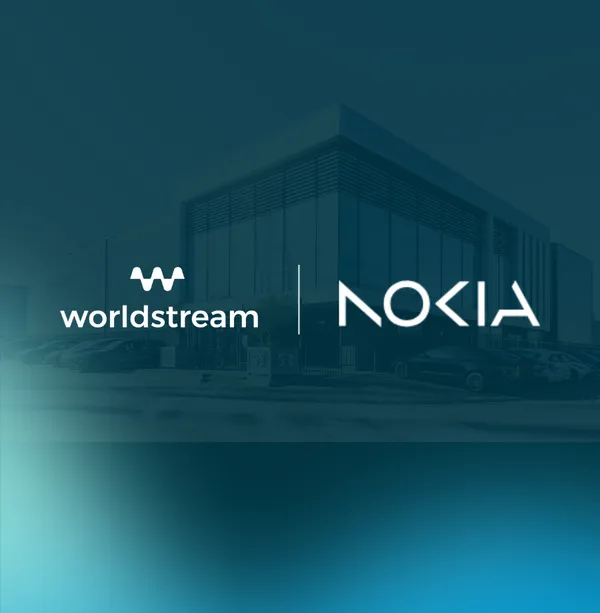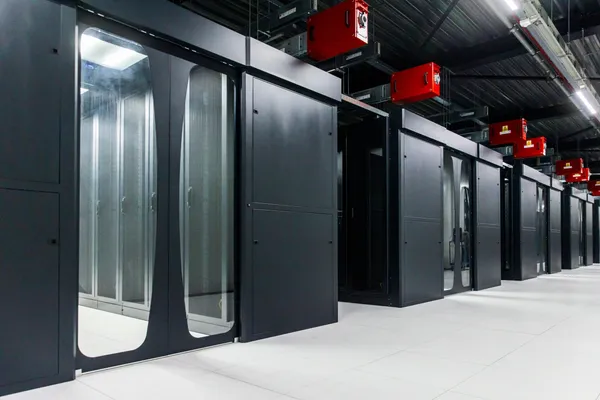Block Storage vs. Object Storage: Understanding the Differences

Knowledge blog

When considering a storage solution for your IT infrastructure and making a balanced selection, it’s vital to know the actual distinctions between block storage and object storage as well as the typical applications for which each of these types of storage technologies are being used. Let’s have a closer look at both block storage and object storage including the differences between the two types of technologies, its use cases, and which one is right for you in what situations.
Block Storage or Object Storage, a side-by-side comparison
The storage of data in blocks, which we call block storage, is a traditional form of storage and the type of storage most frequently being used. Talking about block storage, the data is split down into chunks equal in size and then stored in a system which may be physically dispersed in different environments to maximize the efficiency of the storage solution. In the case of block storage, each chunk of data is provided with its own unique address but it is not accompanied by metadata to add any context with additional information about the chunk of data. The address is the sole way to identify a block, it does not include any metadata.
With block storage there is no need to store data in a file structure because each item of data can be identified by the unique address being assigned. The block storage system can reassemble the blocks of data on-demand when requested. It can usually be retrieved instantly. Storage area networks (SANs) are used to store the data blocks, while FC (Fibre Channel) or iSCSI (Internet Small Computer System Interface) or AoE (ATA over Ethernet) are being used for transport.
Block storage is known for its performance/speed, its flexibility and reliability, but not for its limitless sacalability and cost-efficiency when scaling up beyond certain levels – something that only starts to come into play when we’re talking about terabytes and beyond. So, yes, this technology is highly scalable, but it comes with some limitations. Block storage is generally used for ‘low-level’ data with data volumes that are directly linked to an OS. Server operating systems accessing the data can either be on the same network or on different networks, but they can only connect to the block storage environment through its SAN.
File Storage
Besides block storage and object storage, there’s another type of storage that’s relevant to mention here before we dive into the details of object storage and compare it with block-level storage. It’s called file storage. We won’t go too deep into this though, and this is why. File storage is one of the most traditional types of storage, next to tape storage. With file storage, data is stored as a single piece of information inside a folder. In the case of file storage, network attached storage (NAS) tends to be used to store the data.
An important characteristic of file storage is the hierarchical way it is stored. It actually works in the same way as you would store a piece of paper in a cabinet. When the cabinet is full, you’ll have to add another cabinet. Or, to set this metaphor aside, you would have to add another system in the data center instead of scaling the capacity on a system. So, it’s actually poorly scalable. It is one of the least intelligent types of storage available in the market, although the performance of file storage can be okay. Then again, block storage offers much better performance levels which – in combination with its scalability characteristics – is why so many companies worldwide have adopted it as a way to store their data.
Adding Metadata and Unique ID
Object storage is a type of storage that came on the market more recently than the other storage technologies available. It’s a technology that stores data in the form of objects. Instead of being separated into files or folders, all data is kept in objects in one big repository that may be spread over numerous physical storage devices.
With object storage, each object is accompanied by metadata as well as a unique ID (instead of file name and path), making the data always retrievable, regardless of where the data is kept on a distributed system. Object storage stores data in a flat structure, not in a hierarchical tree structure. The objects function as modular units, also called containers or buckets, each acting as independent repositories, complete with metadata defining detail specifics about what’s inside these objects. An object’s metadata plays a crucial role and it can contain extremely detailed information. According to its role and features, metadata is set by the user and allows for flexible analysis of and retrieval of data in a pool. With regard to object-based storage, TCP/IP is being used for transport, while HTTP and REST APIs are used to communicate between storage appliances which represents another key characteristic. Unlike block storage, object storage is not directly available to the OS. Access takes place via applications, by means of APIs.
You can flexibly determine which machine at what location you will use as an object storage medium. It can be a great advantage to be flexible in choosing your storage system and the site where it is located. It is also possible to scale-out and horizontally add a new storage systyem as soon as a current one is full. In fact, you can add as many appliances as you like. You can also aggregate these object storage appliances into larger storage pools and distribute the storage pools across geographic locations.
Object storage is known for its scalability, robustness, high-availability, and cost-effectiveness, but not for its performance/speed. In most object storage systems, data is stored in multiple separate locations, while internal processes prevent data degradation and loss through replication. Consequently, it’s suitable for safely storing a wide range of unstructured data types that might accumulate to enormous amounts (it can scale to petabytes and beyond) while still maintaining easy-accessibility. In the cloud storage industry for example, object-storage architectures are used by the great majority of cloud storage providers – as cloud is known for its ability to scale IT infrastructures instantly and extensively.
Block and Object Storage, How Do They Really Differ?
We’ve displayed the different technical characteristics of block storage and object storage, but how do they actually differ when using them in every day practice? As said, block storage is the type of storage most frequently being used. Enterprises worldwide have fully embraced block storage as a means of storing their data. This is also reflected in the high global demand for SAN systems now and in the near future, something that’s confirmed by a recent market study conducted by ResearchAndMarkets.com – a report which can be found here. It is anticipated that by 2027, the worldwide server storage area network (SAN) market size will reach $222.5 billion, expanding at a CAGR of 45.7 percent during the next five to six years (2020-2027).
Block storage provides an easy and simple way to store data in an efficient and reliable manner. When using block storage, raw storage volumes can be created that can be accessed by server-based operating systems. Block storage generally contains structured data such as SQL, databases and the like. When the application and storage appliance(s) are close to one other, block storage can result in very high data speeds and quick data retrieval, but it might result in increased latency when the application and appliance(s) are farther apart.
Beyond certain data levels, block storage can become quite expensive while object storage doesn’t have this downside. Using block storage would definitely be a major cost for larger companies in the cloud. It’s why the majority of cloud storage providers are opting for obect storage instead.
Additionally, block storage allows you to modify a single file, while object storage does not. With object storage, you don’t have the ability to modify object modules/containers/buckets. You can only replicate these modules in full, thus creating a new object.
Block vs. Object Storage, The Pros and Cons at a Glance
There is no obvious winner when contrasting block storage with object storage. Data can be stored in two different ways, each with advantages for a certain class of applications. One may be more effective for you, while the reverse may be true for another. When deciding between block and object storage, think about your unique requirements. To sum up, here’s an overview of the pros and cons related to block storage versus object storage.
Some advantages of block storage include:
Flexibility – Block storage allows for customization of the data blocks, offering users high flexibility.
Easy-to-use – With block storage, data can concurrently be stored in Linux and Windows environments, while the data is easy accessible through server operating systems.
High performance – It’s a great fit for database servers and transactional systems for example with I/O intensive workloads, as block storage provides for a high number of IOPS and minimal latency.
Some disadvantages of block storage may include:
No metadata options – If you want to add meta data tot the block storage modules, you’ll have to do it on the application or database levels – which adds complexity.
Limited scalability – Block storage is a highly scalable uption only until certain data capacities (we’re talking terabytes here).
Operational work – Compared to object storage, block storage may require more setup and maintenance efforts, although with Worldstream’s block storage offering powered by the Worldstream Elastic Network the opposite is true.
Some advantages of object storage include:
Infinite scalability – As a user you can limitless add data beyond petascale in a geographically distributed environment.
Speed of data retrieval – Object storage has a flat architecture with added metadata and no folder structure, so (unstructured) data can be retrieved much faster.
Low cost beyond certain data levels – The scale-out nature of object storage makes it less expensive when storing data beyond terabytes.
Enhanced analysis capabilities – Metadata is stored directly with the object, rather than in another node. Its metadata allows object storage systems to analyze every piece of data in detail. With a single API call, both the object and the data associated with it are immediately available.
Some disadvantages of object storage may include:
Not customizable – When using object storage, customizing the meta data is possible but not the objects themselves. If amendments are required, replicating/overwriting the entire object is required.
Lower performance – Due to their increased latency, object storage services cannot be used to back up a conventional relational database for example.
Data access interface – APIs are used to make access possible through third-party apps, instead of widely known server OSs like with block storage. For some this can mean a disadvantage.
Typical Use Cases for Block Storage
Traditional Databases and business-critical applications – Block storage can be utilized when high IO throughput and low latency network-based storage operations are required. For example, database servers and business-critical software application servers that require quick, low-latency and reliable performance. Databases such as from Oracle or SAP are often stored on block-level storage devices, also on SSDs.
Applications that demand high speed, such as transactional databases or traditional relational databases, may benefit from block storage’s granular management while we wouldn’t recommend object storage when these kind of database use cases are concerned.
Virtual machines – Block storage can further be a good fit for virtual machines images and snapshots. VMware virtual machines natively support block storage, allowing organizations to construct a speedy and adaptable/customizable virtual infrastructure quickly.
Common data center setups – Actually, this type of storage may be utilized in virtually any common data center situation. Whether it is a conventional file system for a server or a robust RAID configuration. The use of block storage is therefore quite popular among managed service providers (MSPs) as well, easily allowing them to deliver customized storage solutions to their end clients.
Typical Use Cases for Object Storage
Unstructured data – As object storage is ideal for storing large volumes of unstructured data as well as data that doesn’t need to be modified frequently, it can be a suitable solution for storing high-volumes of static or unstructured data in a geographically distributed manner, also for streaming, for example related to music, video, photos, email, sensor data, and text documents. Some of the most popular brands that employ object storage include Netflix, Amazon, Google, Spotify, Vine, Twitter, Snapchat, and Facebook, which store their massive media assets including song and video/movie libraries using this technique.
Backup & recovery – We are fully aware that many organizations don’t envision themselves as the next Netflix, Spotify, or Snapchat business. Object storage however can be a great match for ‘regular’ backup & recovery applications as well because of its robust nature and limited costs. Due to these characteristics, object storage is utilized by many organizations on a worldwide scale to backup their precious data and workloads to maintain business continuitity and forestall data loss in the case of a disaster.
Cold data – Opposed to hot and warm data, cold data has to be retained for a longer period and will not be altered regularly. In various verticals for example, providers are asked to maintain data under retention for a certain length of time. In that case, object storage can be an ideal and cost-effective option for the use case.
Cloud native applications – Object storage can be an excellent choice for cloud native applications since the applications can link directly with the object store and data may scale easily, instantly and efficiently.
Worldstream Object and Block Storage Offering
Powered by the software-defined Worldstream Elastic Network and the underlying Worldstream network backbone with global reach, Worldstream has powerful, reliable and secure Block Storage and Object Storage solutions available. It is part of the growing portfolio of infrastructural as-a-service solutions offered by Worldstream to tech savvy companies and channel partners such as MSPs and systems integrators. Interested? Find all of the IT solutions on its dedicated web page, including our Block Storage and Object Storage solutions right here.
You might also like:
- Does switching to the cloud complement your IT infrastructure?
- Are Dedicated Servers Still Relevant? We Give 6 Reasons.
- Does an internet exchange offer any benefits for your IT organization?
Have a question for the editor of this article? You can reach us here.

Latest blogs
The Ultimate Gaming Latency Guide: How to Eliminate Lag and Maximize FPS
Knowledge blog

Growing smarter with less maintenance

Knowledge blog

Worldstream and Nokia Join Forces for Next-Gen DDoS Protection

News

Worldstream unveils new positioning and offers customers more control over their digital infrastructure

News

5th Gen AMD EPYC 9355P – Now Live at Worldstream

News

Nokia strengthens Worldstream’s hosting security with advanced DDoS Protection in the Netherlands.

News
